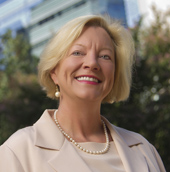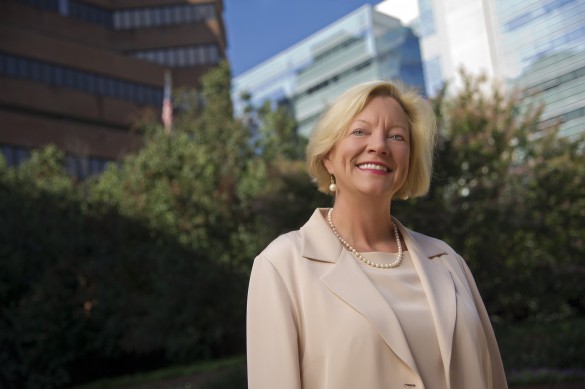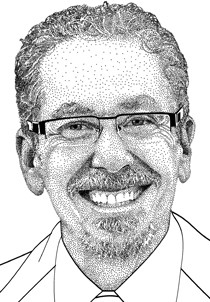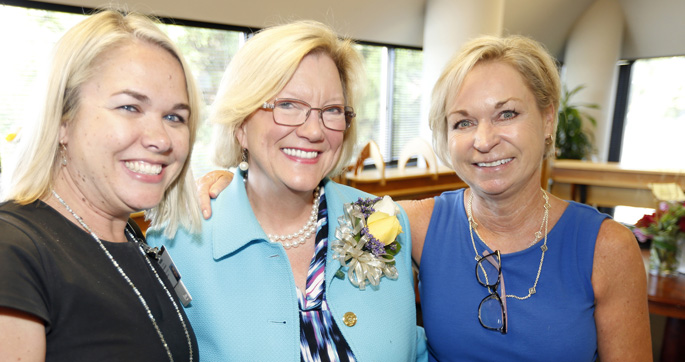
by Bill Snyder
Information is the lifeblood of health care behemoths like Vanderbilt University Medical Center. Without a technically superb and user-friendly system that provides a rapid and reliable flow of data, clinical operations will grind to a halt.
For four decades, most recently as VUMC’s chief information officer for hospitals, Nancy Evans helped lead and transform the Medical Center’s information technology enterprise. She was on the ground floor of several IT installations, including last year’s EpicLeap to eStar.
Friends and colleagues gathered Sept. 4 to celebrate Evans’ achievements — two weeks before her official retirement on Sept. 17. But mostly they wanted to say “thank you” for her collegiality, generosity and can-do spirit, which continue to motivate and inspire.
“Nancy Evans is an example of Vanderbilt at its best,” said William Stead, MD, VUMC’s Chief Strategy Officer, who appointed Evans as CIO in 2001. “She was the person I turned to when we needed to do something requiring coordinated change in several systems at once.”
“Nancy constantly demonstrates excellence as a servant leader,” added Neal Patel, MD, MPH, VUMC’s Chief Health Information Officer. “She has the unique ability to calmly bring people together, to dissect through difficult situations and build relationships.”
“Partnership has always been my mantra,” Evans responded. “It’s really people, process and technology — along with the culture. You can have all the great technology in the world but if you don’t have people trained and processes in place to support the appropriate workflow, the technology isn’t going to work.”
As medical care has become more complex, so has information technology. From scheduling and billing, to labs, pharmacy and radiology, to electronic medical records and now, to clinical decision support, IT keeps growing at an exponential and dizzying rate.
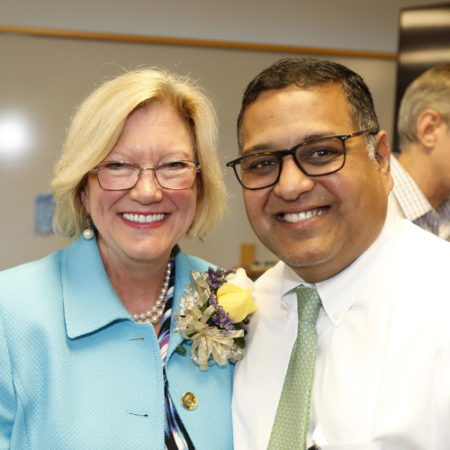
That’s why people like Evans are critical. They connect the process side of health care to the personal. They make technology work.
“She does a great job at both knowing and engaging with stakeholders on any given issue,” said Karen Hughart, MSN, RN, senior director of Nursing Informatics. “She is seen as a true partner for clinical and operational personnel.”
“Nancy’s drive to deliver the best possible health IT solution to help care for our patients fostered collaborations and solutions that Vanderbilt will benefit from for years to come,” added Brian Rothman, MD, medical director for the VUMC Revenue Cycle. “We are indebted to her for her commitment and expertise.”
Evans grew up in McKenzie, a small West Tennessee town. Her father, a World War II veteran, owned the Ford dealership. Her mother was a musician and music teacher.
Evans intended to become a pharmacist but switched to business midway through her undergraduate years at Memphis State University (now the University of Memphis). She earned a bachelor’s degree in business administration/management and marketing in 1974.
“At that time there were very few women in the School of Business,” Evans recalls. “In some of my classes I was the only one. But that didn’t bother me.”
Two years later she and her husband moved to Nashville, where she took a job at VUMC. “I didn’t have a clue what I wanted to do, but I knew I wanted to be at Vanderbilt,” she said. In November 1976, she was hired as an administrative secretary in what was then called management systems.
Evans had studied computer programming in college. She picked up additional classes and within a couple of years was offered an entry-level programming position. “I was always good at math and reasoning and logic,” she explained.
IT at the time was rudimentary. Even into the early 1980s, information systems supported mainly hospital and physician billing, supply order entry and admissions, discharges and transfers (ADT). And most of the programmers were men.
Evans said a couple of the male programmers resented her presence. She responded by telling them, “I don’t want your job. I just want to work with you and with Vanderbilt.” Over time, “we were able to work together as a team and they got to know me,” she said.
In 1984 came Medipac, an integrated billing system with ADT functions that at the time was the largest IT project ever attempted at VUMC. “Evidently they were short of people to do training,” she said, because she was asked to train the admitting and business office staff in insurance verification proced -ures.
Her students ended up teaching her the business of health care. Since then Evans has stressed to her IT colleagues the importance of learning the clinical operations they’re supporting.
“We need to be strategic contributors … not just task managers,” she said. “That helps us make sure we’re delivering what is needed for people to do their work.”
In 1991, Stead arrived from Duke University, eager to apply the fledgling science of biomedical informatics to improving health care delivery. “That was a very exciting time to be here,” Evans recalled. “That’s when things really started to happen.”
An Informatics Center was established, followed by highly successful innovations including the StarPanel electronic medical records application and a computerized provider order entry system with clinical decision support that became known as WizOrder.
Meanwhile, Evans continued to rise through the ranks and by 1997 had joined the Informatics Center Management Team. She helped the Medical Center prepare for Y2K, a potentially disastrous situation tripped by the inability of computer clocks to recognize the year 2000.
In 1999 Stead asked her to co-lead IT design for patient care units in the new Monroe Carell Jr. Children’s Hospital at Vanderbilt.
She would work with Patel, a pediatric critical care specialist with expertise in bioinformatics, who’d arrived two years earlier from Children’s Hospital Los Angeles.
“The design for the patient care units was thought out with the architects, the nurses, the physicians, the patient family representatives and the people who were in various roles in the hospital,” Evans said. “It was probably the most rewarding experience I’ve had.”
After the hospital opened in 2004, Evans continued working with Patel. “It’s been the best kind of partnership I could ever ask for,” she said.
Her biggest project, of course, was of “epic” proportions — the massive switch to eStar, which supports electronic health records, workflows for inpatient and outpatient care delivery, test ordering, billing and other hospital and clinical operations.
Evans was a critical part of the project’s steering/selection committee. Having implemented an earlier Epic system in 1997, “we were already familiar with (the company),” she said.
“We went through a very thorough (evaluation) process,” Evans said. “We looked at other vendors and at the end of the day we determined that Epic was going to be the best partner for us.”
Nine months after “go-live,” the new system still is very much a work in progress. But that was to be expected, Evans said.
And that’s where VUMC’s culture of collaboration and its long-term investment in informatics come into play.
“We have a plan,” she said. “We have the support of leadership to do what we need to do. And we have our Department of Biomedical Informatics that we can tap into. Not every academic medical center has that.”
Displayed on a cabinet in her seventh-floor office in the 3401 West End Building are a few of the awards Evans has received during her career.
Among them: a 2011 Five Pillar Leader Award, given to staff and faculty who exemplify VUMC leadership standards, and citations from Health Data Management magazine honoring her as one of the “most powerful women” in health care IT in 2016 and 2017.
That doesn’t mean Evans acts like a steamroller. On the contrary, the awards represent to her the ability that many women have to lead in collegial and respectful ways.
Evans said she never felt she was held back because of her gender. “I’ve been fortunate while I’ve been here at Vanderbilt to have some very supportive mentors and leaders,” she said, including Kevin Johnson, MD, MS, chairman of the Department of Biomedical Informatics.
“When I think of Nancy,” Johnson said, “I think of a poised, considered, experienced and intelligent professional who exemplifies all that any of us aspire to be. She has handled extremely strenuous situations with grace. Most importantly, she puts patients first, and helps all of us remember how fortunate we are to be working to serve them.”
“She’s one of a kind,” he said, “and leaves very large shoes to fill.”













